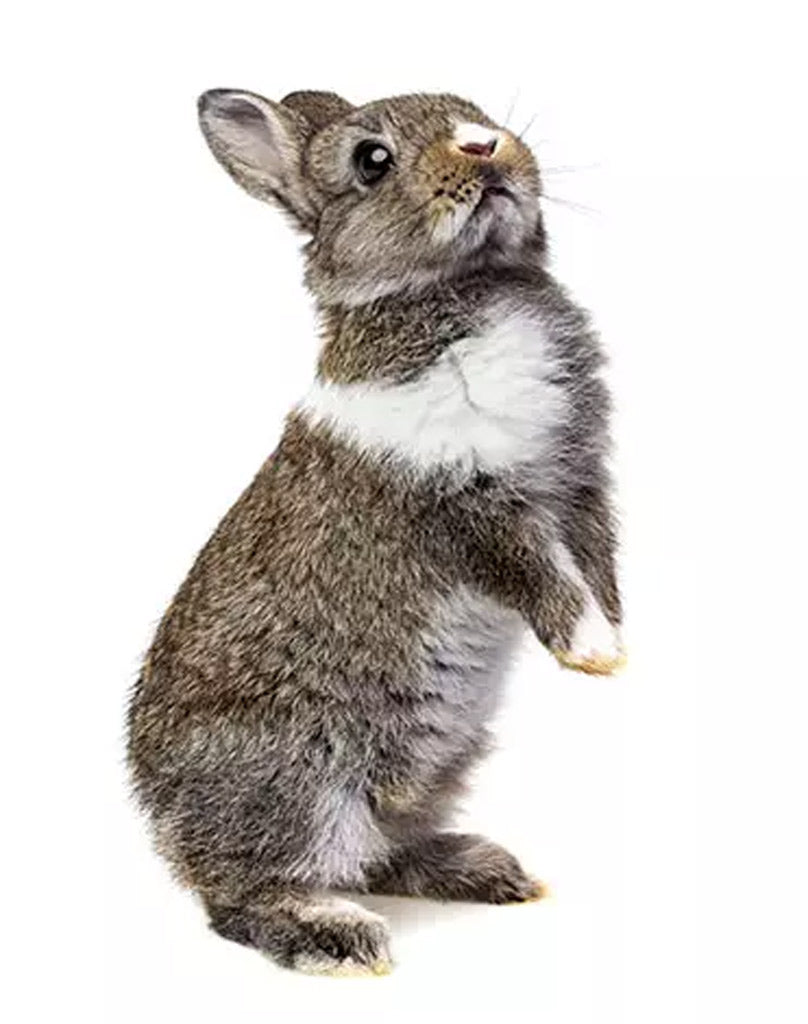Rabbits and Flystrike
Wednesday ,22nd November 2023



Understanding Flystrike in Rabbits | Causes, Prevention, and Treatment
Rabbits make wonderful pets with their gentle nature and adorable features. However, like any other living beings, they are susceptible to certain health issues. One such concern that rabbit owners should be aware of is flystrike, a potentially serious condition that can affect our furry friends. As prey animals, rabbits are very good at masking their discomfort – so it’s important to know what flystrike is, how to prevent it, and how to treat it.
In this blog, we will delve into what flystrike is, its causes, preventive measures, and how to treat it if your rabbit is affected.


What is Flystrike?
Flystrike, also known as myiasis, a condition where flies lay their eggs on the fur of animals, and the hatched maggots then burrow into the skin. This can occur in any warm-blooded animal, including rabbits. When the maggots hatch, they take up residence on your rabbit – eating through the skin and eventually invading the deeper tissue beneath. As awful as this condition is, it’s not common in healthy bunnies. The majority of rabbits that suffer from flystrike are:
- Those that cannot groom themselves due to obesity or other illness
- Living in unsanitary housing conditions. Flies are attracted to dirty and damp environments. If your rabbit's living space is not kept clean and dry, it becomes an ideal breeding ground for flies.
- Soiled from urine or faeces, or wounded. Flies are drawn to the scent of blood and will lay their eggs on the rabbit
- Rabbits are meticulous groomers, but sometimes they may not be able to keep themselves dry. Wet fur, especially around the hindquarters, can attract flies.
If your rabbit’s coat becomes overly dirty (caked on droppings, urine-soaked, or constantly damp from the weather) or their living conditions become so soiled that numerous flies are drawn to them, they are at risk of flystrike. Flies are part of living outdoors and small numbers of these flying pests are not usually cause for alarm. But, when flies are attracted to the dirty, smelly coat of a rabbit in less-than-ideal conditions, trouble is likely to set in.
Flystrike is most common during the summer months when flies are the most active. Warmer temperatures are hospitable for maggots and, with rabbits typically laying in the cool grass or shade during the heat of the day, flies can easily seek them out. Bringing your rabbit indoors during the hottest part of the day may help abate the nuisance from flies.
Indoor rabbits are less susceptible to flystrike as it’s less likely that those living indoors would have unsanitary coats or living conditions. And, houses tend to have fewer flies inside than the outside world.
6 Signs and Symptoms of Flystrike in Rabbits
Flystrike can occur rapidly, as maggots can hatch within mere hours of eggs being laid.
Maggots seek out a food source as soon as they hatch, meaning your rabbit is in imminent danger of becoming a host for them.
Bunnies may exhibit any of the following signs if they’re suffering from flystrike, so it’s important to perform regular rabbit health checks to evaluate their health.
- Presence of Maggots:
The first symptom of flystrike is the presence of maggots. Fly larvae start out small and are worm-like in appearance.
Flies lay their eggs on the part of the animal they are most drawn to.
In the case of rabbits, this will usually be around the tail where urine and faeces are most likely to be present. - Lethargy:
Your rabbit may appear listless or dull when they’re in pain.
Flystrike causes extreme discomfort, so your bunny is likely to be less active and will be hesitant to move in most cases.
Lethargic rabbits may also spend more time inside of their hutch. - Loss of Appetite:
Most animals (rabbits included) will be off of their feed when they aren’t feeling well. If your rabbit isn’t eating or drinking, there’s a good chance there’s something going on with them. Flystrike can cause a weakened or dehydrated rabbit to go downhill rapidly. - Increased Digging:
Agitated rabbits in pain may dig more in an effort to relieve their discomfort. Look for signs of your rabbits digging in corners in particular.
Claw marks on the inside of hutches, outside in the run, or in bedding can be telling of a rabbit in pain. - Odour from Enclosure:
As you can imagine, flystrike causes a foul odour. The smell of the decaying flesh that the maggots leave in their wake is not a subtle sign.
This sign usually occurs as flystrike progresses to a dire level. - Shock:
The final stage of flystrike is shock. Shock sets in when a rabbit’s body is overwhelmed by pain, infection, or external stressors.
Flystrike brings all of these conditions, making it very dangerous for rabbits. Symptoms of shock include:
rapid breathing | pale mucous membranes (eyes, gums) | seizures | unconsciousness or collapse |death
If you suspect that your rabbit has flystrike, it is crucial to seek veterinary attention immediately. Time is of the essence in treating this condition.
The vet will carefully remove the maggots, clean the affected area, and provide appropriate antibiotics to prevent infection.
In severe cases, surgery may be necessary.
Do not attempt to treat or remove burrowed maggots yourself, as pieces can break off inside of your rabbit and cause infection.
Rabbits with flystrike will need prescription antibiotics and pain medication to make a full recovery.

Omlet Eglu Rabbit Hutches offer great access with easy to clean surfaces.
By shutting the hutch door, your bunny remains safely in the run, while you clean and refresh your pet's food, water and bedding.



How to Prevent Rabbit Flystrike
Keeping your rabbit’s home clean is one of the most important and effective ways to prevent flystrike. Cleaning your rabbit’s hutch and refreshing their bedding daily in the summer is essential to combating flies. The Eglu Go Plastic Rabbit Hutch by Omlet can be thoroughly cleaned in just a few minutes each day, and has ample ventilation to prevent odours from building up. The expandable attached run gives rabbits plenty of room to run and lounge, spreading out their droppings to further deter flies from gathering.
For even more space to escape flies, our Zippi Rabbit Tunnel System can be connected to your hutch and rabbit playpen to create a larger area. You can also add platforms to playpens to encourage more exercise and prevent your rabbits from becoming overweight. Combined with a balanced bunny diet, Zippi Rabbit Platforms will help your furry family members stay in tip-top shape.



Swipe for more
Conclusion
Flystrike is a serious health concern for rabbits, but with proper care and preventive measures, it can be avoided.
Regular grooming, maintaining a clean living environment, and promptly addressing any wounds or injuries are key to preventing flystrike.
Remember, if you suspect your rabbit has flystrike, seek veterinary assistance without delay to ensure the best possible outcome for your furry friend's health and well-being.
Swipe for more












